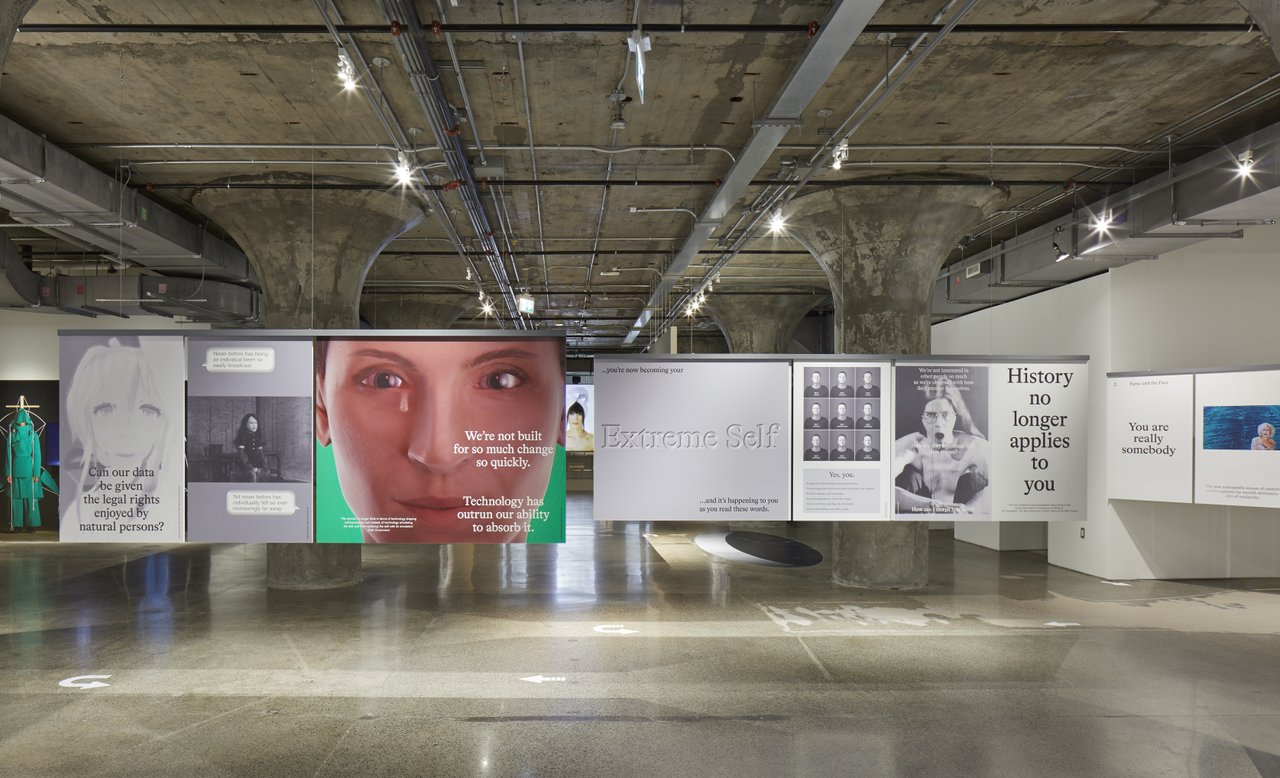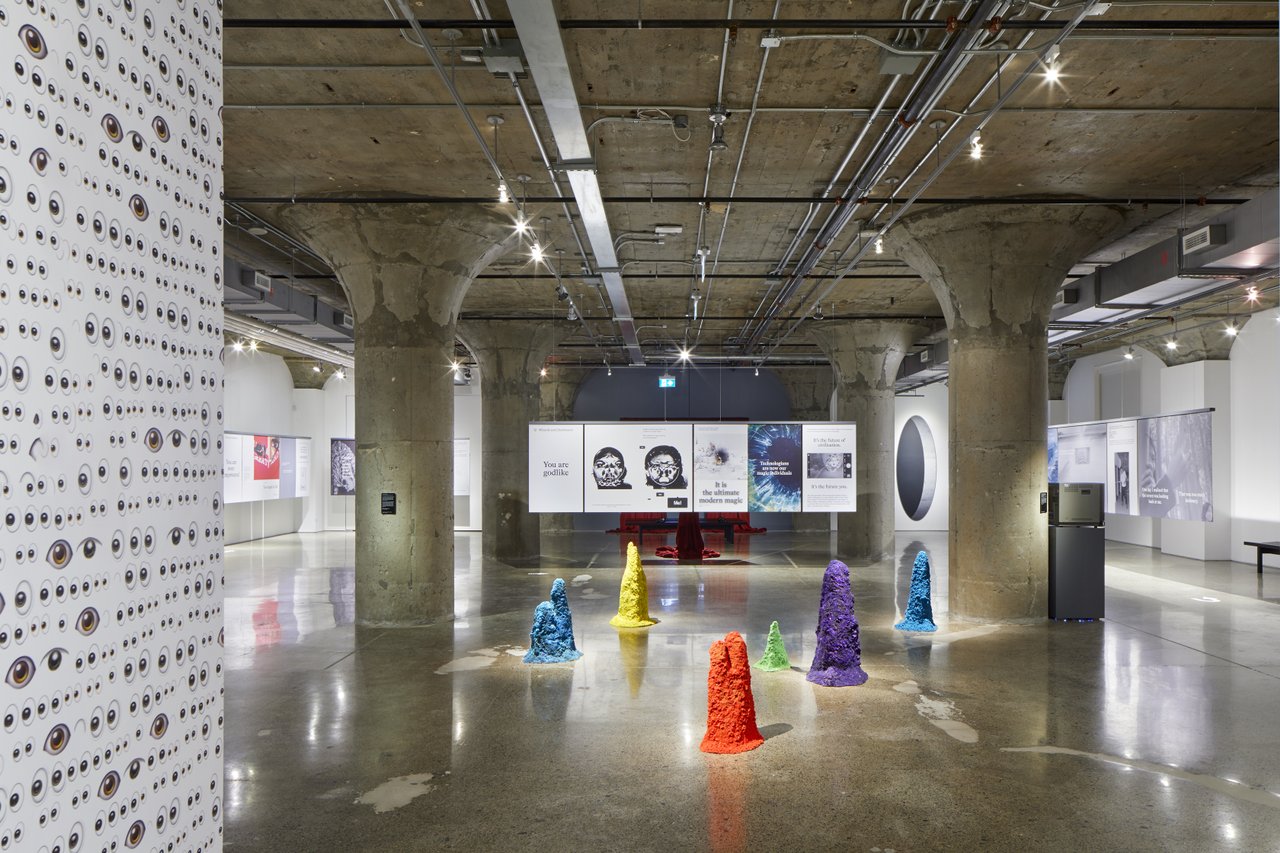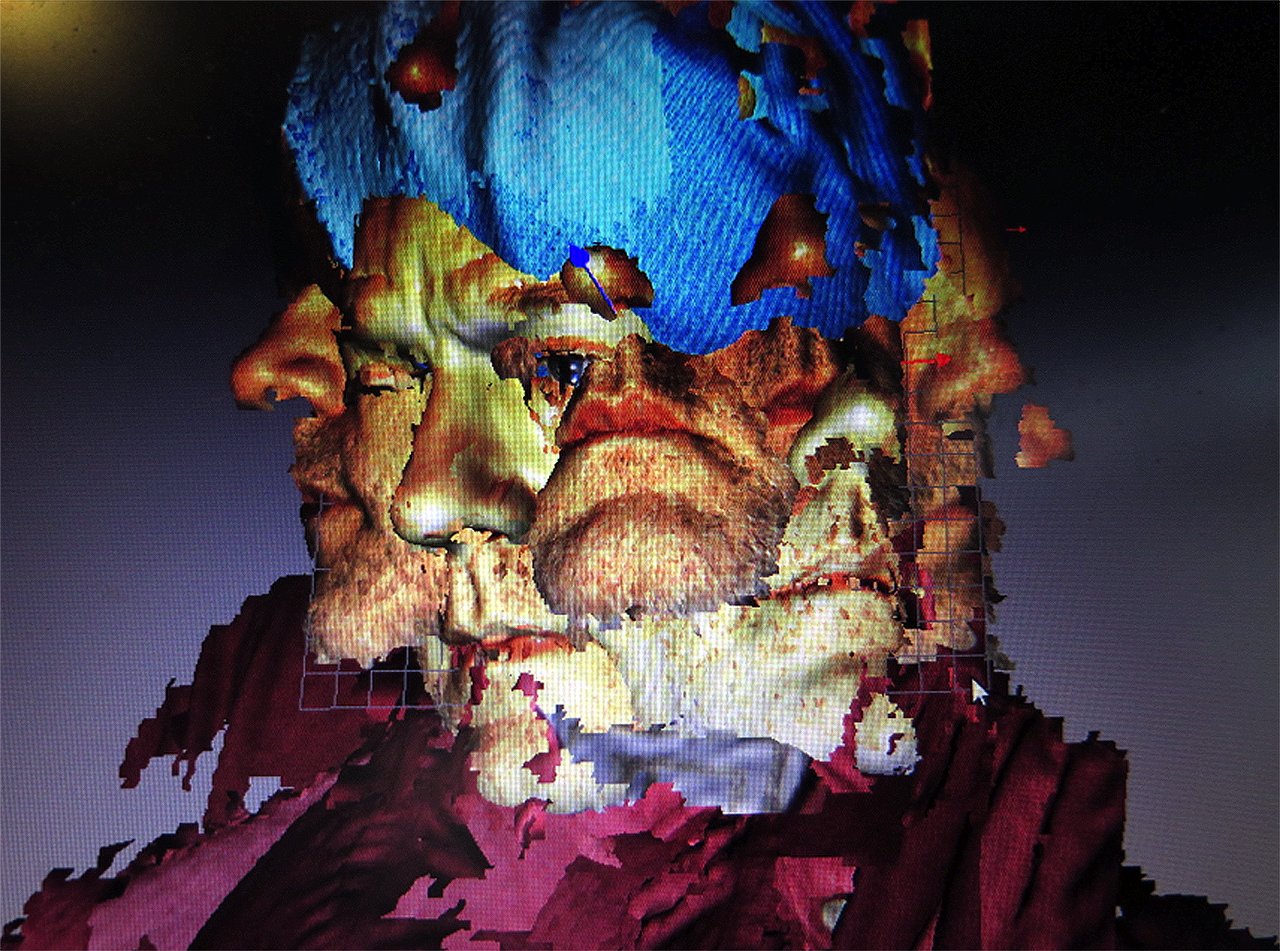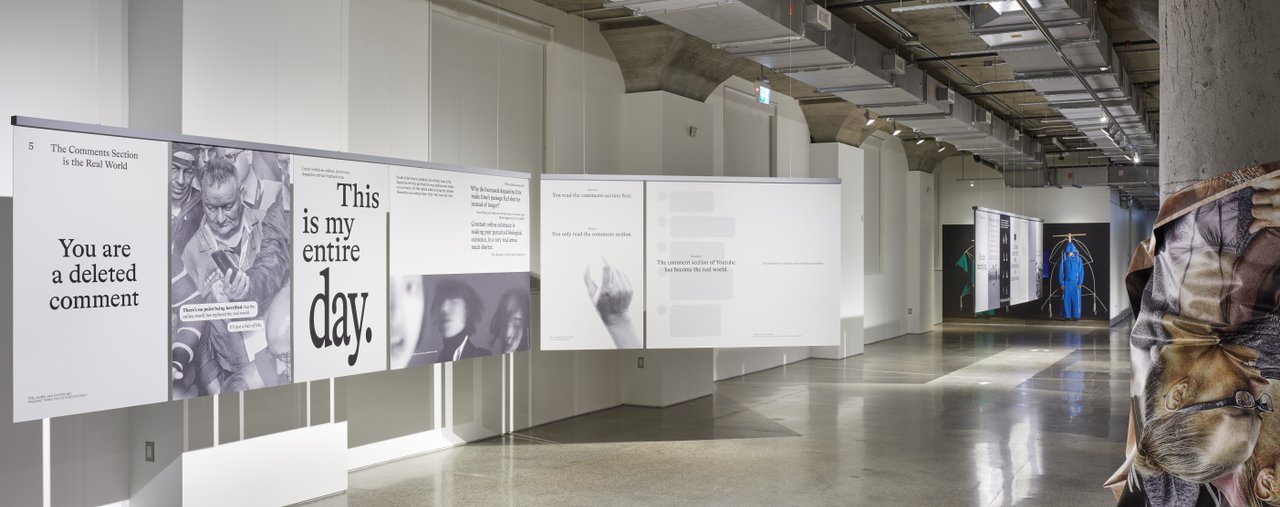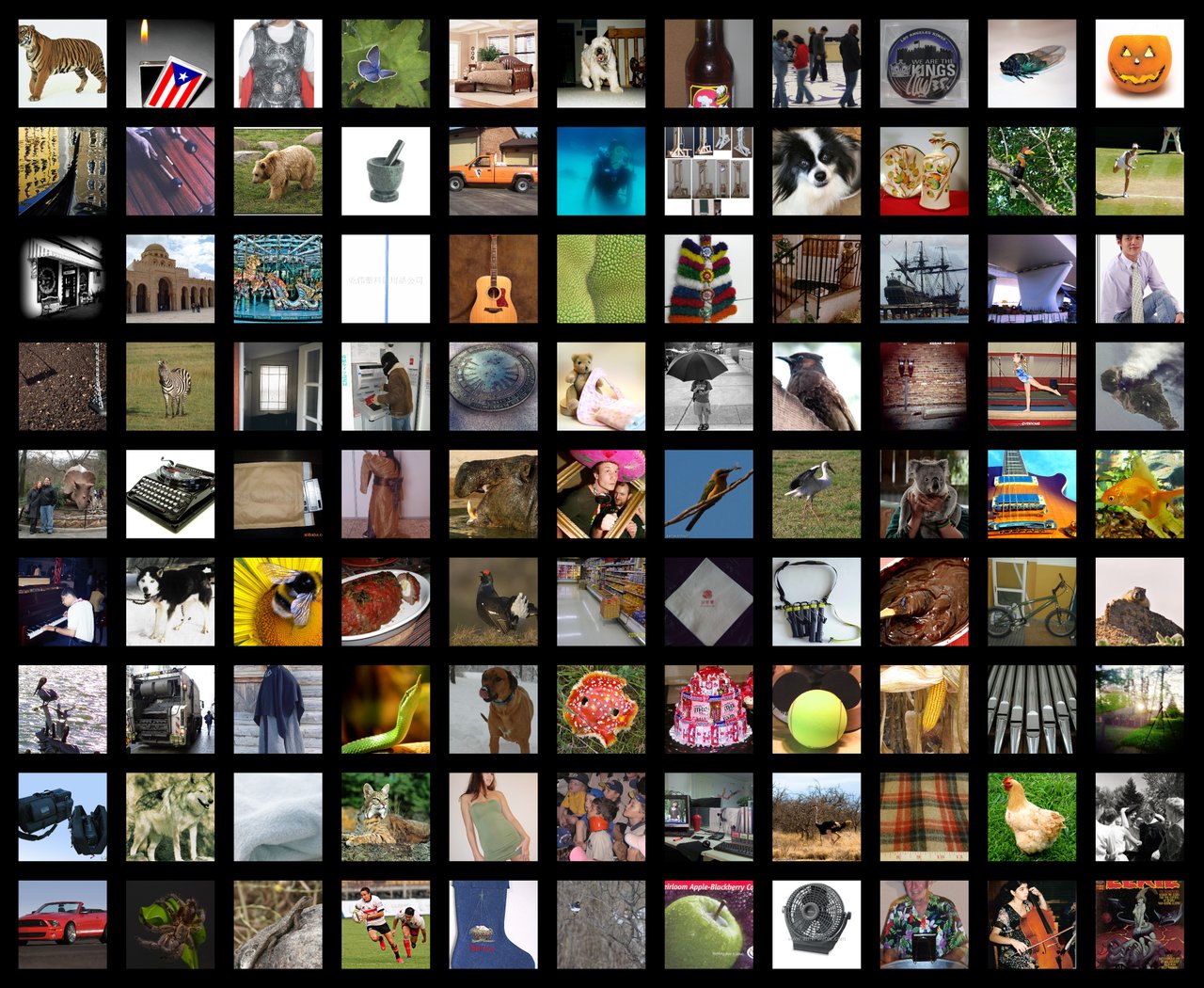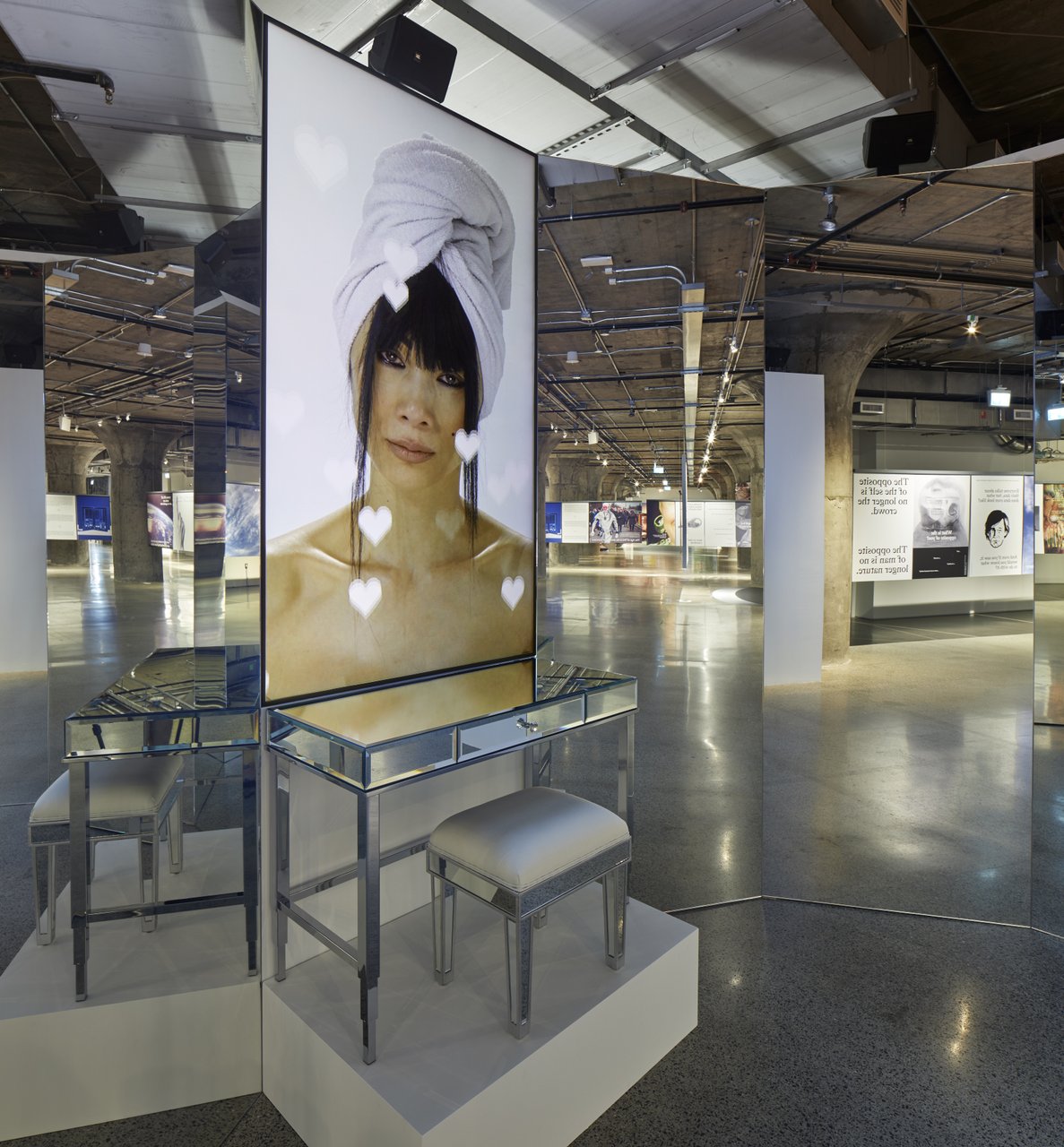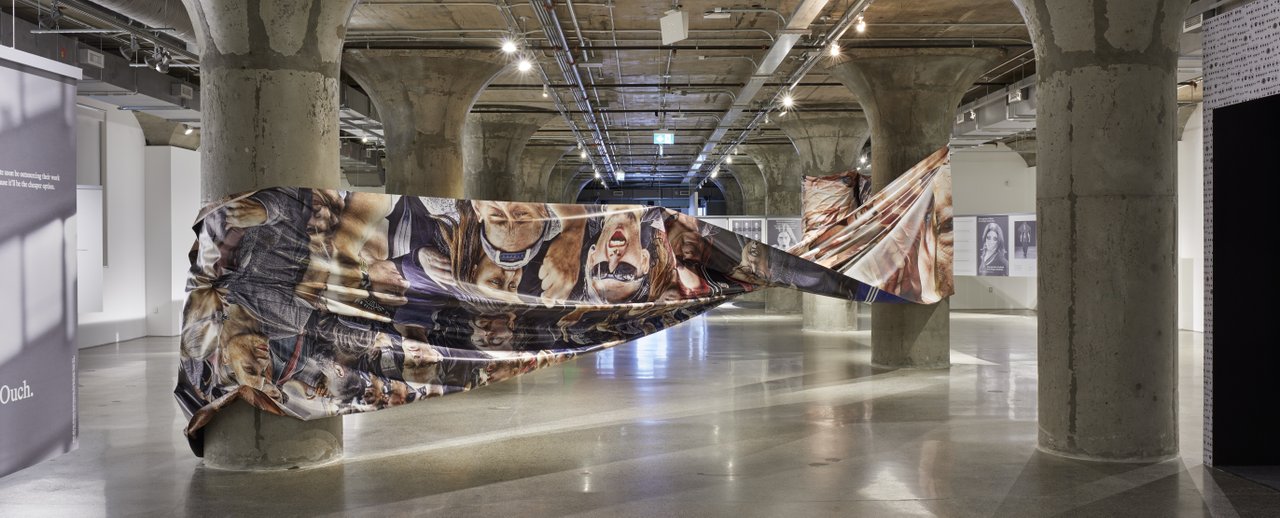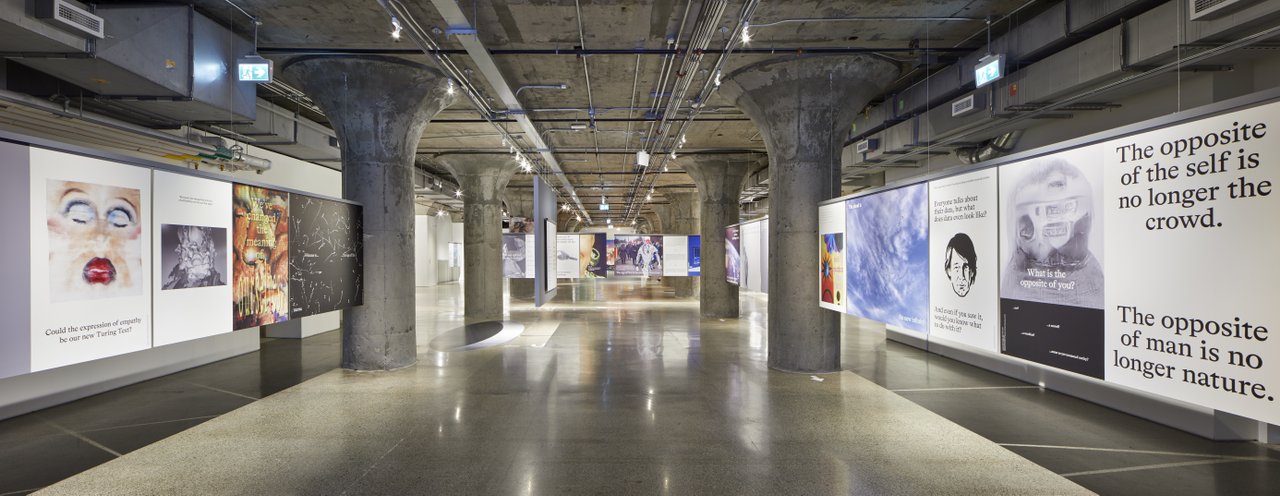Toronto’s Museum of Contemporary Art has chosen an apt exhibition to usher in the 2020s – a decade we face with a degree of foreboding. Ten years ago Facebook was quickly approaching a billion subscribers. Mark Zuckerberg declared that people no longer have an expectation of privacy – they have become more comfortable with sharing information with others. Indeed, the idea of the unrestricted sharing of personal information seemed liberating to many. It was felt that social media are a tool for good. For example, Jessi Hempel in Wired magazine observed: “The Arab Spring [that began in 2011] carried the promise that social media and the Internet were going to unleash a new wave of positive social change.” (26 Jan, 2016) But, as Hempel immediately noted, the promise soon faded. Now, ten years on, any inkling of an edenic vision of a global village has been replaced by fear of a dystopian future.
This descent into dystopia is a central theme of the exhibition, curated by Douglas Coupland, Shumon Basar and Hans Ulrich Obrist. Coupland is a Canadian author and visual artist who needs little introduction. Basar is a British cultural director. Obrist is a Swiss curator loosely based in London, where he is director of the Serpentine Gallery. After bumping into each other in Dubai, they determined to write a book which they titled The Age of Earthquakes (2015). The book was a response to the precipitous pace of change in this new information age. One of the environmental impacts of information technologies, they claim, has been an increase in earthquakes no less. Subsequently MOCA commissioned the trio to produce an exhibition based on their planned sequel, to be titled The Extreme Self. They describe the exhibition as a preview of this yet-to-be-published book.
Installation view, Age of You, MOCA Toronto with Extreme Self (right side panels). Photo by Tom Arban Photography Inc.
Located on both the second and third floors of the museum, Age of You features the work of seventy artists and designers. But when visitors enter the space they are immediately confronted by an array of large mainly double-sided posters suspended from the ceiling. These are organised into thirteen ‘chapters’. The works of the visual artists, on the other hand, are dotted around the periphery.
Installation view: Agnieszka Kurant, “A.A.I.”, 2014-17 (centre); Age of You, MOCA Toronto. Photo by Tom Arban Photography Inc.
The introductory panel explains: “In your digital interactions, a large part of you is extracted from you, and now exists everywhere and nowhere.” Their thesis is that we suddenly find ourselves the subjects of a new incarnation of economic, political and social hegemony known as surveillance capitalism (as coined by Shoshana Zuboff in her book titled the Age of Surveillance Capitalism). We have been transformed from consumers to the consumed. Capitalism’s profits are increasingly made by selling data they collect about us. These data are consequently extracted from us ad libitum by giant tech firms like Google, Facebook, and their subsidiaries, as well as governments. The end result, they claim, is that our identities are migrating to intelligent machines. Our agency has slipped away from us and is now in the hands of the machines themselves.
Michael Stipe “3-D SCAN, EARLY TECHNOLOGY”, with Michael Oliveri, Athens
According to Coupland, Basar and Obrist technological progress has become so rapid that the future has collapsed into the present. Every day we wake up to this or that new discovery or invention. Hence we live in what they call the ‘extreme present’. The experience of time is reduced to that primitively determined by our neurology, namely a sliver of time that is two to two-and-a-half seconds in duration. And for this very reason they decided to limit the texts printed on the posters to a length that can be consumed within this narrow timeframe. While the resulting snippets of text have an oracular feel to them, the downside is that the viewer/reader is seldom challenged. Under the chapter titled ‘The End of Democracy’ one reads, for example, that “We’re now deep into the terminal phase of democracy.” This is thought provoking, but what do we do with it? It suggests so much but gives one very little in terms of tangible ideas. Many of these aphorisms and quotes can seem like mere intellectual titillation in the end.
Installation view, Age of You, MOCA Toronto. Photo by Tom Arban Photography Inc.
The artists’ contributions to the exhibition themselves are often poignant and powerful. One video installation by Trevor Paglen, titled Behold These Glorious Times!, stands out in particular. The images used come from a vast digital library supplied to a machine, which processes them in order to gain the capability of recognising various objects and human emotions in faces etc. We see a dramatic rendering of the machine’s inner workings as it learns to imitate these very human skills. Knowing this makes the experience of watching the video display of flashing imagery rather disturbing.
Trevor Paglen “Behold these Glorious Times!”, 2017 Courtesy the artist and Metro Pictures, New York.
Another major installation is Sophia Al-Maria’s Mirror Cookie. The elaborate symmetrical set consists in a large vertical screen at its centre with a dressing table and chair underneath. The screen is reflected in a range of mirrors on either side. It displays a video of an American-Chinese actress, Bai Ling, that is a mashup of her short instagram videos that she calls ‘cookies’. To an eerie soundtrack Bai Ling pronounces her love of, and affection for, her viewer, who we understand to be herself since she is depicted as a reflection, as if she were seated at the chair and dressing table. Al-Maria aims to highlight the challenge of maintaining one’s self-love in the face of the aggressive and often poisonous online culture.
Sophia Al-Maria “Mirror Cookie”, 2018 Courtesy the artist, Fondazione Arnaldo Pomodoro Milan and Project Native Informant, London.
There isn’t the space to list them all in detail, but there are also works by Sara Cwymar, Craig Green, Agnieszka Kurant, Yuri Pattison and Victoria Sin among others.
Victoria Sin, “Tell me everything you saw, and what you think it means”, 2018, film still. Courtesy the artist.
Installation view: Satoshi Fujiwara, “Crowd Landscape”, 2019; Age of You, MOCA Toronto. Photo by Tom Arban Photography Inc.
At its heart the show centres on the curators’ claim that the nature of what it is to be, our identity under the moniker ‘the self’, has been fundamentally changed. But what is the self they imagine is being extracted from each of us? It is not very clear. In an interview Coupland, seemingly exasperated, notes that it is difficult ‘to access the true self’. In this information age this quest seems to him to have become almost quixotic. Centuries ago the Scottish enlightenment philosopher David Hume famously remarked that however hard he introspects and tries to observe the self behind his experiences, it remains stubbornly elusive. Hume concluded that the idea of the self as a thing is mistaken. There is nothing more than the sequence of images that is the theatre of our experiences. As Hume intimates, talk of the self being here or there, extracted and so on is all rather vague. It is in danger of ultimately amounting to mere hand waving. It is perhaps best to think of such talk in this context as a dramatic device for highlighting the ways in which surveillance capitalism threatens to disempower us, ironically under the guise of personal empowerment, by manipulating our behaviour.
Installation view, Age of You, MOCA Toronto. Photo by Tom Arban Photography Inc.
So long as you take the curators’ prognostications with a pinch of salt, there is plenty to think about upon seeing this exhibition. It is provocative, intelligently thought out and brimming with great art. MOCA has provided a grand exhibition to reflect on all the disruptive changes our society is experiencing. Let’s hope the coming years are not as inauspicious as feared.
Hugh Alcock
*Exhibition information: September 5, 2019 – January 5, 2020, Museum of Contemporary Art, 158 Sterling Road, Toronto. Museum hours: Mon, Wed, Thurs, Sat and Sun 10 am – 5 pm, Fri 10 am – 9 pm, Tue closed.

